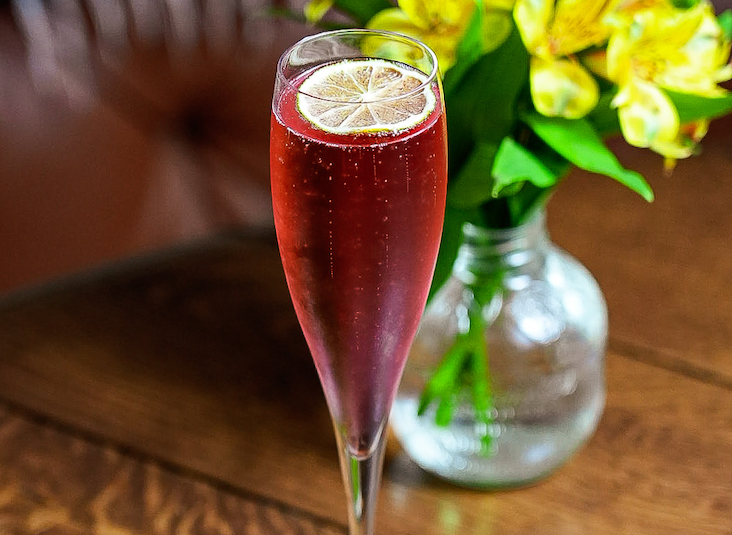Clint Sloan knew something was up and it was not just his cost of goods. In the first quarter of 2010, food and drink expenses at McCrady’s, a local restaurant in Charleston, S.C., had jumped almost five percent. “I did not believe anyone was stealing or giving drinks away,” said beverage director and sommelier Sloan. Further digging exposed the problem: new, larger Martini glasses and heavy-handed pours. “Turns out the new Martini glasses were an ounce larger than the ones we used to use,” he says, “Guests were getting almost 20 percent more Martini.”
Also, during pour tests, McCrady’s bartenders were a good ounce over on all liquor pours and almost two ounces over on wine pours. The fix? McCrady’s increased Martini prices and added dummy glasses filled with water to correct each pour. The result? A nine percent improvement in cost of goods over a two-month period. “The basics are critical. Inventory is the most important aspect of beverage management.”
Shrinkage—loss due to theft, breakage, spoilage and waste—is an ongoing industry challenge. The Washington, D.C.-based National Restaurant Association doesn’t have data on percentages, but director of media relations Annika Stensson says, “operations have been keeping a closer-than-ever eye on [shrinkage] in the economic downturn to protect profit margins.” Stensson adds that waste, not theft, is the main culprit.
To shrink shrinkage and close the gap between theoretical and actual food costs, operators are also tightening everything from inventory controls to hiring, training and kitchen procedures. “These days, we have to pay very close attention to the details,” says Jonathan Fox, owner of LaMadia, a pizzeria in Chicago. “Margins are smaller, so we have to look more at managing the pennies versus the dollars.”
Begin at the Beginning
Because managing those pennies is so integrally linked to inventory, scrutinizing inventory systems is square one. Many operators stress the importance of scrupulous record-keeping. Measures such as locking doors and closely monitoring delivery help, as do more sophisticated inventory-control systems.
When Eric Tschetter opened his Pour House sports bar in a larger location in Fort Worth, Texas, he added a Bevinco liquor system that weighs all beverage alcohol on a weekly basis. Cross- referencing usage with the PMIX, Tschetter can now tell exactly what’s missing and his managers can discover where any discrepancies come from. To help close the gap between their current 93 percent utilization of product and their goal of 97 percent, bartenders meet to exchange ideas about how to ensure that drinks are standardized.
Similarly, Columbus, Ohio-based Cameron Mitchell Restaurants, which operates 28 seafood restaurants, brought in the Accubar inventory system three years ago to get a more accurate accounting of its numbers. Since then the operation has worked to control shrinkage three main ways, says Ryan Valentine, director of beverage. These include installing storage areas, using jiggers and making use of the new inventory system for liquor use in specialty drinks.
At one unit, a large amount of an irregular spirit was missing, according to the inventory. “It turned out the bartender wasn’t charging enough for the spirit he was pouring,” says Valentine.
Inspired Hires
To ensure that employees handling restaurant product have integrity, many operators have also adjusted hiring procedures. Dean McSherry, CEO of Dallas-based Preferred Restaurant Services, a restaurant management consulting company, says he and his clients are using more background checks. Lu Brow, bar chef at the Creole cuisine Cafe Adelaide and the Swizzle Stick Bar, both in the 285-room Loews New Orleans Hotel, stresses that it’s “really important to check out employed history, length of employment and recommendations.”
Once hired, training and retraining employees to ensure that product isn’t wasted is also important. Some bars, such as the Swizzle Stick, require the use of jiggers, “not just to control shrinkage, but for consistency’s sake,” says Brow. “The biggest amount of shrinkage is what’s left in the shaker that goes down the drain!”
Other operations, such as La Madia’s Fox, allow free pours, but are careful to conduct pre-shift test pours. “We implement pour tests in every pre-shift.” Fox believes the repetition helps bartenders get in a rhythm that sets the tone for the shift. Other operators include a “dummy” glass of water, filled to the correct level, on the bar to help bartenders eyeball the correct measure. Some restaurants even etch a pour line into the stemware itself.
Avoiding Waste and Deterring Theft
Operations with by-the-glass programs also face spoilage-minimization challenges. Tim Baldwin, general manager of the Summit Restaurant at the 744-room Broadmoor Hotel in Colorado Springs, says meticulous management is essential. “We’re constantly reviewing what sells,” he says. “If something’s been opened, we must sell it within a day.”
Recently, Summit’s chefs and bartenders started menus to reduce waste. “Our bartenders now do a regular menu tasting so they’ll know what ingredients the chef has on hand.” The kitchen team will then make syrups and purees for the bar. Ingredients like fig compote and apples the chef planned for his dessert menu were all translated into specialty cocktails, for $10.25. The Figgy-licious is a blend of Absolut Raspberri Vodka, fig purée and cranberry juice. The Apple of My Eye includes Leopold Brothers Apple Flavored Whiskey, thyme syrup and orange juice.
Training can also reduce losses. At La Madia some staff was polishing the glasses from the stem, which broke more glasses. So LaMadia held a training session on how to hold glasses and reduced breakage by 50 percent.
As painful as it is for any operator to admit, theft is still an undeniable part of the shrinkage equation. “If you see something funny in the numbers, something funny probably is going on,” cautions Gregg Horan, director of operations for the Chicago-based, eight-unit Gibson’s Group. “One of our restaurant’s wine costs kept fluctuating. We attributed it to pouring and let it go on three or four months.” When the company finally sent spotters in, they figured out that theft was to blame and ended up having to fire an entire bar staff and general manager.
Many operators believe cultivating a culture of integrity and using inventory controls are good deterrents to theft. “It has to be a multipronged approach,” says McSherry, of Preferred Restaurant Services. “Employees have to be aware that product is going to be measured and checked on a regular basis.”
But McSherry believes secret shopping is also an effective tool. Valentine agrees, “We do send spotters in and now and then. It helps that everyone knows this is going on and it makes them more aware.”
As a parting note, he adds that entrusting bartenders to give complimentary drinks at their discretion is positive reinforcement that actually discourages theft. “We just make sure the drinks are accounted for and rung up.”




